| View previous topic :: View next topic |
| Author |
Message |
kryss


Joined: 13 Sep 2009
Posts: 2169
Location: Canada
Expire: 2017-09-18
|
 Posted: Tue Aug 19, 2014 11:29 pm Post subject: Posted: Tue Aug 19, 2014 11:29 pm Post subject: |
 |
|
kryss wrote:
Thanks Marcus......I just upgraded to the EM2(will be selling myEM1)and I am blown away with mirror less,in fact I can see an EM-D-1 sitting with all my other cameras very soon and coupled with the Sony a7 this is all I will need so a clear out is imminent.
As I mentioned I have not used this lens so far, this is first time out of the case as I shoot mainly Macro but it is certainly a thing of beauty and is in as new condition. I also think that my heavy duty tripod would help as this one seems a tad flimsy. I could be open to realistic offers for the lens and case. Thanks again.
_________________
Do not trust Atoms....they make up everything. |
|
| Back to top |
|
 |
marcusBMG

Joined: 07 Dec 2012
Posts: 1318
Location: Conwy N Wales
|
 Posted: Wed Aug 20, 2014 1:11 pm Post subject: Posted: Wed Aug 20, 2014 1:11 pm Post subject: |
 |
|
marcusBMG wrote:
I've mostly used mine in the hides at the bird reserve, I just use a large bean bag on the window sill. Avoids the balance problems with the TM. I see you have used some sort of strapping of the camera to an extension on the TM. If you look back in this post you can see my solution using a cheap far east macro rail and an extra support moulded from a bit of hard wood with my dremel.
Check it out and post some images.
_________________
pentax ME super (retired)
Pentax K3-ii; pentax K-S2; Samsung NX 20; Lumix G1 + adapters;
Adaptall collection (proliferating!) inc 200-500mm 31A, 300mm f2.8, 400mm f4.
Primes: takumar 55mm; smc 28mm, 50mm; kino/komine 28mm f2's, helios 58mm, Tamron Nestar 400mm, novoflex 400mm, Vivitar 135mm close focus, 105mm macro; Jupiter 11A; CZJ 135mm.
A classic zoom or two: VS1 (komine), Kiron Zoomlock... |
|
| Back to top |
|
 |
kryss


Joined: 13 Sep 2009
Posts: 2169
Location: Canada
Expire: 2017-09-18
|
 Posted: Wed Aug 20, 2014 2:03 pm Post subject: Posted: Wed Aug 20, 2014 2:03 pm Post subject: |
 |
|
kryss wrote:
Thats the camera strap(not tied to rail) and a 4way fairly expensive focusing rail and probably will not use the lens so don't want to spend time doing any mods,thanks for tip anyway.
_________________
Do not trust Atoms....they make up everything. |
|
| Back to top |
|
 |
cooltouch


Joined: 15 Jan 2009
Posts: 9096
Location: Houston, Texas
|
 Posted: Wed Aug 27, 2014 7:59 am Post subject: Posted: Wed Aug 27, 2014 7:59 am Post subject: |
 |
|
cooltouch wrote:
| marcusBMG wrote: |
| visualopsins wrote: |
The test images have been sharpened -- the in-camera sharpness setting of '5' was applied on conversion of images from raw to tif -- surely that is why images look like those from lenses costing 4-figures or more. |
Sharpening works on edge contrast. It doesn't produce detail that isn't there. It won't make soft(er) images from a less sharp lens look like images from a sharper lens. cooltouch is using a relatively high MPx camera and the lens IMO has shown its good resolution in those 100% crops. |
Based on my own experience enhancing (and attempting to enhance) thousands of images, both film and digital, I'd say that I have to agree with Marcus. If the sharpness isn't there to begin with, no amount of high-pass, unsharp masking, edge-enhancement or any other type of trick is gonna substitute for it. In the last set of pics of the fire hydrant I used a very mild amount of unsharp masking to the photos. I'm not at that computer or else I could give you the actual numbers I used. Also, it is typical for me to bump the camera sharpness up to 7 or so when working with the raw files in Canon's DPP, which I didn't do with these photos. Anyway, as I mentioned before, I am very pleased with the outcome. I own a variety of Tamron telephoto zooms, the 103A 80-210/3.8-4, the 23A SP 60-300/3.8-5.4, and 19AH SP 70-210 f/3.5 This 31A is the best of the lot. But it comes at a price. Its often steep price on the used market aside, its sheer size can be a real drawback for casual use. One really has to want to use this mortar tube, which necessitates not only having to deal with its bulk and weight, but the bulk and weight of a good, solid tripod as well -- unless one has window sills and bean bags handy 
_________________
Michael
My Gear List: http://michaelmcbroom.com/photo/gear.html
My Gallery: http://michaelmcbroom.com/gallery3/index.php/
My Flickr Page: https://www.flickr.com/photos/11308754@N08/albums
My Music: https://soundcloud.com/michaelmcbroom/albums
My Blog: http://michaelmcbroom.com/blogistan/ |
|
| Back to top |
|
 |
marcusBMG

Joined: 07 Dec 2012
Posts: 1318
Location: Conwy N Wales
|
 Posted: Thu Aug 28, 2014 10:08 pm Post subject: More sample pics with a 31A. Posted: Thu Aug 28, 2014 10:08 pm Post subject: More sample pics with a 31A. |
 |
|
marcusBMG wrote:
An obliging cormorant gave me the opportuinity to do some shots with different combo's:
K-r + 31A
K-r + 31A + 014F tc
Lumix G1 (12MPx mft) + 31A
I thought it would be interesting to see if a bit of perspective might be seen on more focal length vs more crop factor, and on K-r vs G1.
Heres some full size crops, processed from RAW (except #5 - OtC jpg) but with similar adjustments - clarity + ~30-40; sharpening + ~40-50; shadows bumped to lighten dark feathers; exposure adjustments as necessary. G1 was at 200ASA, K-r at 400ASA.


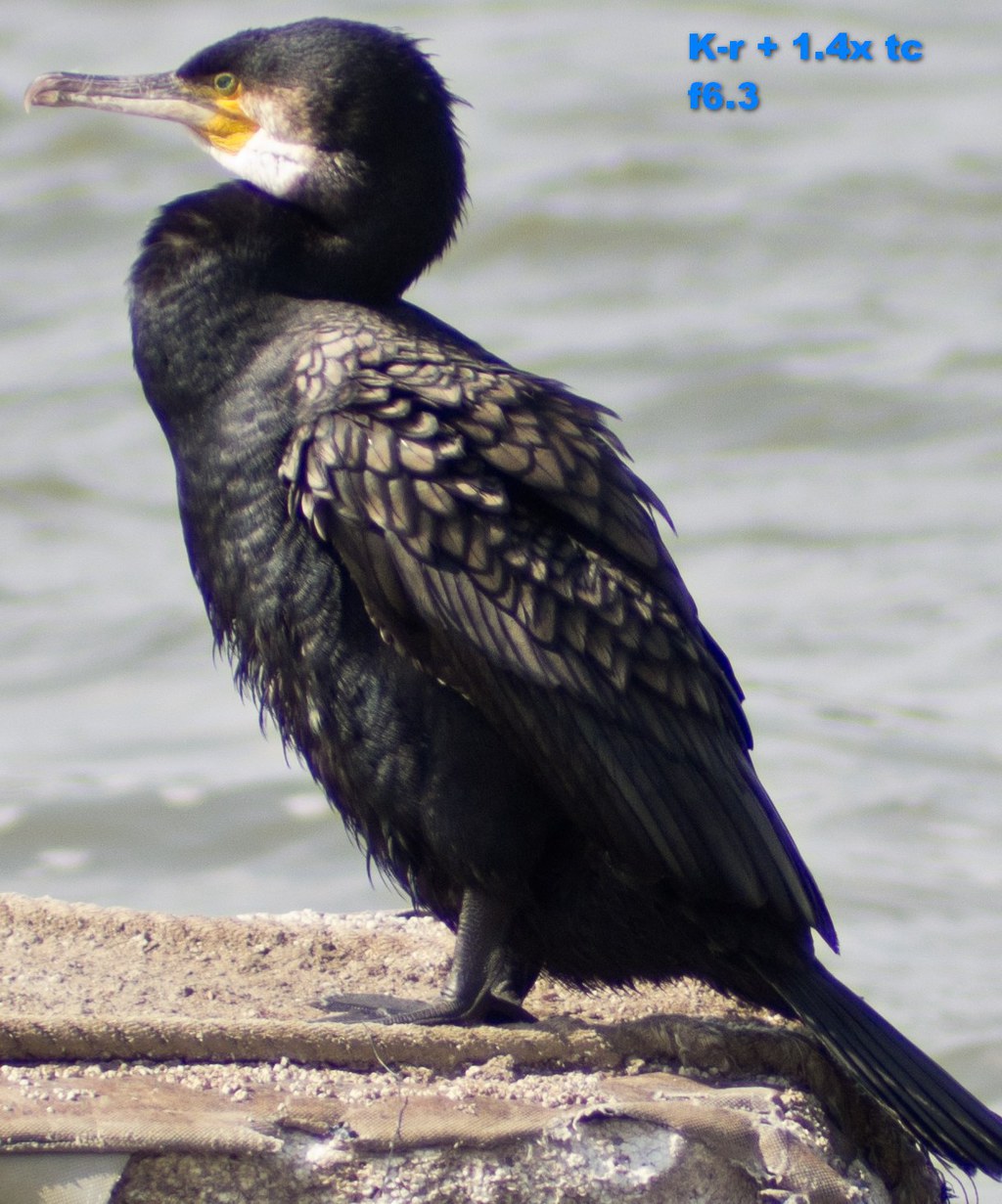
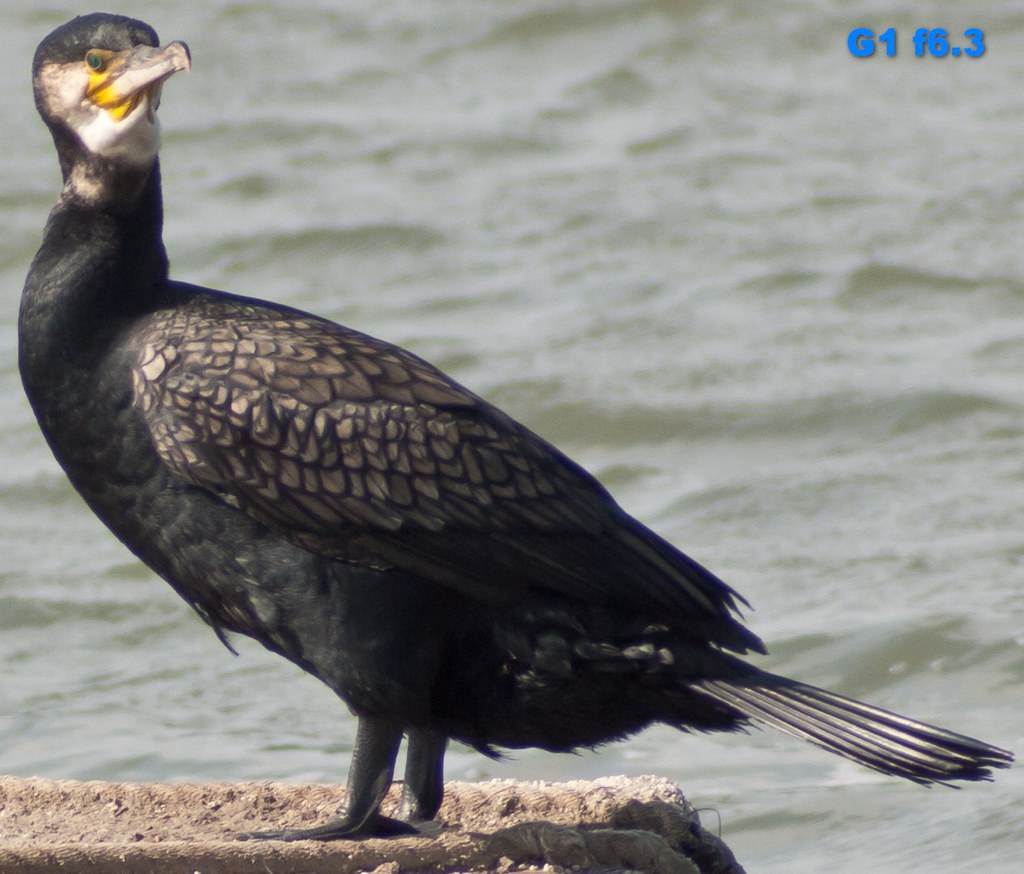
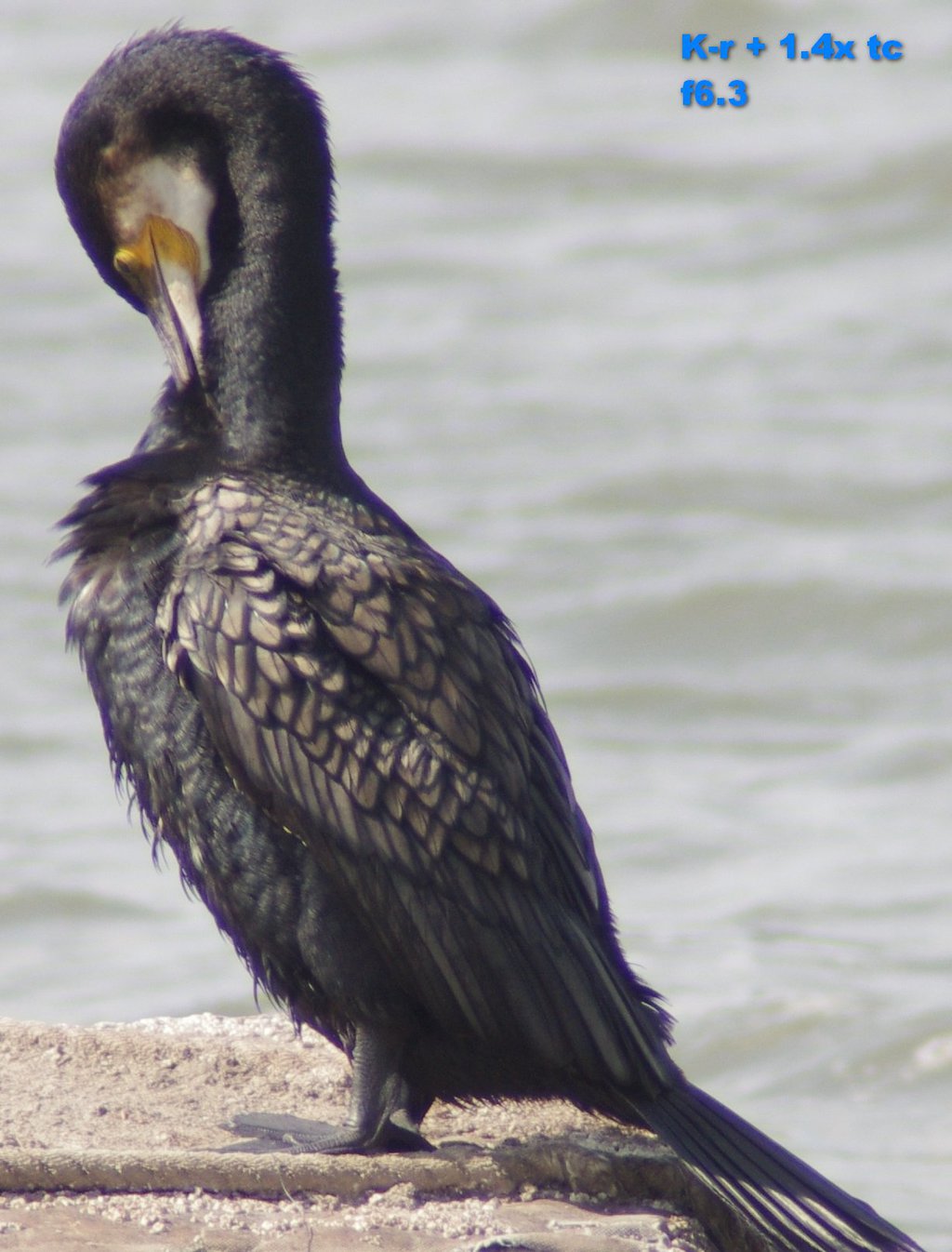
My impressions from the score or so pics I took before the cormorant took off were:
- K-r takes sharper and more detailed pics than the G1.
- The 1.4x tc did pull more detail in, at the expense of more pronounced CA.
- for me upping the focal length was better than the higher crop factor.
But this was a very ad hoc set up, and at the end of the day, technique/lighting/nailing focus all more important IMO.
_________________
pentax ME super (retired)
Pentax K3-ii; pentax K-S2; Samsung NX 20; Lumix G1 + adapters;
Adaptall collection (proliferating!) inc 200-500mm 31A, 300mm f2.8, 400mm f4.
Primes: takumar 55mm; smc 28mm, 50mm; kino/komine 28mm f2's, helios 58mm, Tamron Nestar 400mm, novoflex 400mm, Vivitar 135mm close focus, 105mm macro; Jupiter 11A; CZJ 135mm.
A classic zoom or two: VS1 (komine), Kiron Zoomlock... |
|
| Back to top |
|
 |
cooltouch


Joined: 15 Jan 2009
Posts: 9096
Location: Houston, Texas
|
 Posted: Sat Aug 30, 2014 5:04 am Post subject: Posted: Sat Aug 30, 2014 5:04 am Post subject: |
 |
|
cooltouch wrote:
When I look at bird pics, I pay most of my attention to feather detail and the eye(s). In this case I actually like your second G1 pic the best. The eye and the head's feather detail in that pic seem to be the sharpest. The first shot using the K-R with the 1.4x is also good, but doesn't seem to have quite the crispness of the second G1 shot. Although the detail at the cormorant's feet is very good. But given that we're talking about a manual focus lens here, I always try to see if I can find areas of the pic that seem to be more in focus than others. Most of the above pics are showing very good detail in whatever that was that the cormorant was standing on. This also reveals the difference between taking pics of a static as opposed to a dynamic subject. As the bird moves, portions of it will go in and out of focus and, if the shutter speed isn't high enough, motion blur can also become a detracting factor. I don't know about you, but I find getting good pics of birds, especially when using a MF optic, to be a real challenge. Their unpredictable jerky movement is usually what does me in.
_________________
Michael
My Gear List: http://michaelmcbroom.com/photo/gear.html
My Gallery: http://michaelmcbroom.com/gallery3/index.php/
My Flickr Page: https://www.flickr.com/photos/11308754@N08/albums
My Music: https://soundcloud.com/michaelmcbroom/albums
My Blog: http://michaelmcbroom.com/blogistan/ |
|
| Back to top |
|
 |
marcusBMG

Joined: 07 Dec 2012
Posts: 1318
Location: Conwy N Wales
|
 Posted: Sat Aug 30, 2014 3:01 pm Post subject: Posted: Sat Aug 30, 2014 3:01 pm Post subject: |
 |
|
marcusBMG wrote:
I agree with everything you say cooltouch. Although the bird was relatively stationary in its position, it was moving, particularly the head, a lot. Shutter speeds were 1/250th - would have been beneficial to have been faster. but certainly with the G1 I am reluctant to push the ASA - gets grainy fast ( a lumix weakness).
_________________
pentax ME super (retired)
Pentax K3-ii; pentax K-S2; Samsung NX 20; Lumix G1 + adapters;
Adaptall collection (proliferating!) inc 200-500mm 31A, 300mm f2.8, 400mm f4.
Primes: takumar 55mm; smc 28mm, 50mm; kino/komine 28mm f2's, helios 58mm, Tamron Nestar 400mm, novoflex 400mm, Vivitar 135mm close focus, 105mm macro; Jupiter 11A; CZJ 135mm.
A classic zoom or two: VS1 (komine), Kiron Zoomlock... |
|
| Back to top |
|
 |
visualopsins


Joined: 05 Mar 2009
Posts: 11028
Location: California
Expire: 2025-04-11
|
 Posted: Sat Aug 30, 2014 5:26 pm Post subject: Posted: Sat Aug 30, 2014 5:26 pm Post subject: |
 |
|
visualopsins wrote:
| marcusBMG wrote: |
| visualopsins wrote: |
The test images have been sharpened -- the in-camera sharpness setting of '5' was applied on conversion of images from raw to tif -- surely that is why images look like those from lenses costing 4-figures or more. |
Sharpening works on edge contrast. It doesn't produce detail that isn't there. It won't make soft(er) images from a less sharp lens look like images from a sharper lens. cooltouch is using a relatively high MPx camera and the lens IMO has shown its good resolution in those 100% crops. |
Which is sharper?:

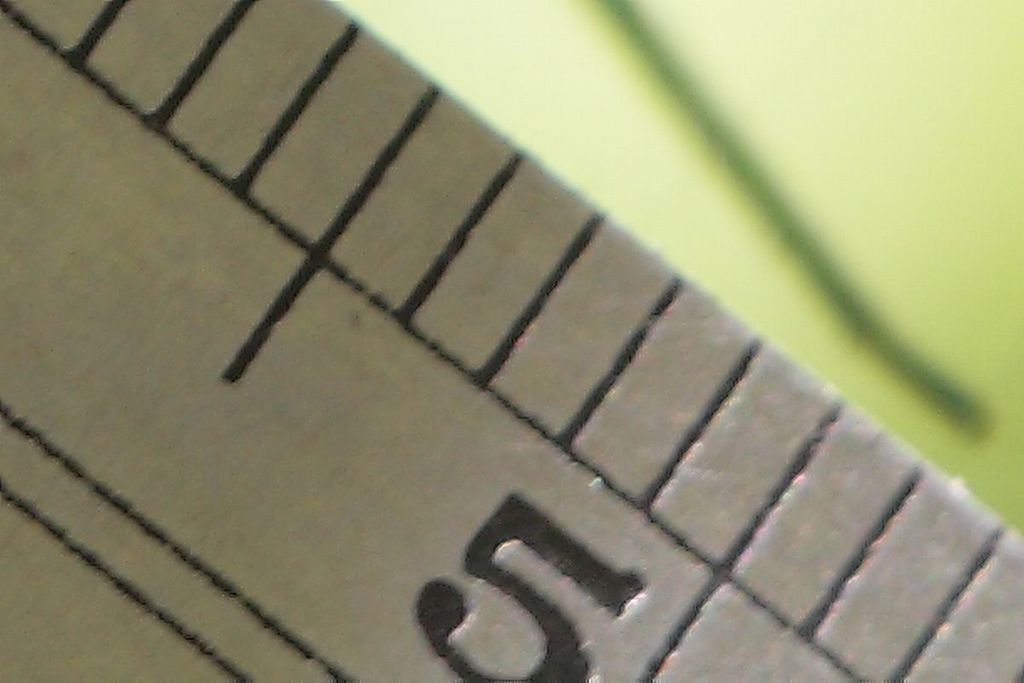
The first is not sharpened or unsharpened; the second is sharpened with the DPP software maximum setting of '10'. Of course these are the same cropped pixels from the same image -- not two images, not from two lenses. I think sharpening can indeed "make soft(er) images from a less sharp lens look like images from a sharper lens" -- not all, but some, due to the nature of "sharpness", which is a combination of fine detail and edge contrast.
_________________
☮☮☮☮☮☮☮☮☮☮☮☮☮☮☮☮☮☮☮☮☮☮☮☮☮☮☮☮☮☮☮☮ like attracts like! ☮☮☮☮☮☮☮☮☮☮☮☮☮☮☮☮☮☮☮☮☮☮☮☮☮☮☮☮☮☮☮☮
Cameras: Sony ILCE-7RM2, Spotmatics II, F, and ESII, Nikon P4
Lenses:
M42 Asahi Optical Co., Takumar 1:4 f=35mm, 1:2 f=58mm (Sonnar), 1:2.4 f=58mm (Heliar), 1:2.2 f=55mm (Gaussian), 1:2.8 f=105mm (Model I), 1:2.8/105 (Model II), 1:5.6/200, Tele-Takumar 1:5.6/200, 1:6.3/300, Macro-Takumar 1:4/50, Auto-Takumar 1:2.3 f=35, 1:1.8 f=55mm, 1:2.2 f=55mm, Super-TAKUMAR 1:3.5/28 (fat), 1:2/35 (Fat), 1:1.4/50 (8-element), Super-Multi-Coated Fisheye-TAKUMAR 1:4/17, Super-Multi-Coated TAKUMAR 1:4.5/20, 1:3.5/24, 1:3.5/28, 1:2/35, 1:3.5/35, 1:1.8/85, 1:1.9/85 1:2.8/105, 1:3.5/135, 1:2.5/135 (II), 1:4/150, 1:4/200, 1:4/300, 1:4.5/500, Super-Multi-Coated Macro-TAKUMAR 1:4/50, 1:4/100, Super-Multi-Coated Bellows-TAKUMAR 1:4/100, SMC TAKUMAR 1:1.4/50, 1:1.8/55
M42 Carl Zeiss Jena Flektogon 2.4/35
Contax Carl Zeiss Vario-Sonnar T* 28-70mm F3.5-4.5
Pentax K-mount SMC PENTAX-A ZOOM 1:3.5 35~105mm, SMC PENTAX ZOOM 1:4 45~125mm
Nikon Micro-NIKKOR-P-C Auto 1:3.5 f=55mm, NIKKOR-P Auto 105mm f/2.5 Pre-AI (Sonnar), Micro-NIKKOR 105mm 1:4 AI, NIKKOR AI-S 35-135mm f/3,5-4,5
Tamron SP 17mm f/3.5 (51B), Tamron SP 17mm f/3.5 (151B), SP 500mm f/8 (55BB), SP 70-210mm f/3.5 (19AH)
Vivitar 100mm 1:2.8 MC 1:1 Macro Telephoto (Kiron)
|
|
| Back to top |
|
 |
marcusBMG

Joined: 07 Dec 2012
Posts: 1318
Location: Conwy N Wales
|
 Posted: Sat Aug 30, 2014 11:01 pm Post subject: Posted: Sat Aug 30, 2014 11:01 pm Post subject: |
 |
|
marcusBMG wrote:
High contrast image with edges that certainly look sharper when sharpness is applied. Thats just a statement of the obvious.
But take your point to its logical conclusion visualopsin, are you saying that there is no point to a $1000+ dollar pro lens? That all that needs to be done is bump the sharpness in PP?
Perhaps you could/should clarify your original point and say what we might do to get a more objective sense of the 31A's resolution.
_________________
pentax ME super (retired)
Pentax K3-ii; pentax K-S2; Samsung NX 20; Lumix G1 + adapters;
Adaptall collection (proliferating!) inc 200-500mm 31A, 300mm f2.8, 400mm f4.
Primes: takumar 55mm; smc 28mm, 50mm; kino/komine 28mm f2's, helios 58mm, Tamron Nestar 400mm, novoflex 400mm, Vivitar 135mm close focus, 105mm macro; Jupiter 11A; CZJ 135mm.
A classic zoom or two: VS1 (komine), Kiron Zoomlock... |
|
| Back to top |
|
 |
visualopsins


Joined: 05 Mar 2009
Posts: 11028
Location: California
Expire: 2025-04-11
|
 Posted: Sat Aug 30, 2014 11:54 pm Post subject: Posted: Sat Aug 30, 2014 11:54 pm Post subject: |
 |
|
visualopsins wrote:
| marcusBMG wrote: |
| High contrast image with edges that certainly look sharper when sharpness is applied. Thats just a statement of the obvious. |
That's my thinking. 
| marcusBMG wrote: |
| But take your point to its logical conclusion visualopsin, are you saying that there is no point to a $1000+ dollar pro lens? That all that needs to be done is bump the sharpness in PP? |
I said the not sharpened 31A images probably do not look like images from a $1k+ lens. 
| marcusBMG wrote: |
| Perhaps you could/should clarify your original point and say what we might do to get a more objective sense of the 31A's resolution. |
Sorry, I assumed that is clearly to post only not sharpened images to use for comparison purposes online.
_________________
☮☮☮☮☮☮☮☮☮☮☮☮☮☮☮☮☮☮☮☮☮☮☮☮☮☮☮☮☮☮☮☮ like attracts like! ☮☮☮☮☮☮☮☮☮☮☮☮☮☮☮☮☮☮☮☮☮☮☮☮☮☮☮☮☮☮☮☮
Cameras: Sony ILCE-7RM2, Spotmatics II, F, and ESII, Nikon P4
Lenses:
M42 Asahi Optical Co., Takumar 1:4 f=35mm, 1:2 f=58mm (Sonnar), 1:2.4 f=58mm (Heliar), 1:2.2 f=55mm (Gaussian), 1:2.8 f=105mm (Model I), 1:2.8/105 (Model II), 1:5.6/200, Tele-Takumar 1:5.6/200, 1:6.3/300, Macro-Takumar 1:4/50, Auto-Takumar 1:2.3 f=35, 1:1.8 f=55mm, 1:2.2 f=55mm, Super-TAKUMAR 1:3.5/28 (fat), 1:2/35 (Fat), 1:1.4/50 (8-element), Super-Multi-Coated Fisheye-TAKUMAR 1:4/17, Super-Multi-Coated TAKUMAR 1:4.5/20, 1:3.5/24, 1:3.5/28, 1:2/35, 1:3.5/35, 1:1.8/85, 1:1.9/85 1:2.8/105, 1:3.5/135, 1:2.5/135 (II), 1:4/150, 1:4/200, 1:4/300, 1:4.5/500, Super-Multi-Coated Macro-TAKUMAR 1:4/50, 1:4/100, Super-Multi-Coated Bellows-TAKUMAR 1:4/100, SMC TAKUMAR 1:1.4/50, 1:1.8/55
M42 Carl Zeiss Jena Flektogon 2.4/35
Contax Carl Zeiss Vario-Sonnar T* 28-70mm F3.5-4.5
Pentax K-mount SMC PENTAX-A ZOOM 1:3.5 35~105mm, SMC PENTAX ZOOM 1:4 45~125mm
Nikon Micro-NIKKOR-P-C Auto 1:3.5 f=55mm, NIKKOR-P Auto 105mm f/2.5 Pre-AI (Sonnar), Micro-NIKKOR 105mm 1:4 AI, NIKKOR AI-S 35-135mm f/3,5-4,5
Tamron SP 17mm f/3.5 (51B), Tamron SP 17mm f/3.5 (151B), SP 500mm f/8 (55BB), SP 70-210mm f/3.5 (19AH)
Vivitar 100mm 1:2.8 MC 1:1 Macro Telephoto (Kiron)
|
|
| Back to top |
|
 |
marcusBMG

Joined: 07 Dec 2012
Posts: 1318
Location: Conwy N Wales
|
 Posted: Mon Sep 01, 2014 5:57 pm Post subject: Posted: Mon Sep 01, 2014 5:57 pm Post subject: |
 |
|
marcusBMG wrote:
| visualopsins wrote: |
Sorry, I assumed that is clearly to post only not sharpened images to use for comparison purposes online. |
Ah Ok thats a valid point for sure... but I'm not sure how useful it is. All images surely have some processing, unless they are raw RAW, and I'm not sure how informative raw RAWs would be really, they just tend to look not that great!
I find it very difficult to try to get a sense of the difference between lenses from online images, there's just too many variables. I just acquire a sense from browsing that such and such a lens has images by a photographer that have impressed me.
What I'll maybe try to do is chat up another photographer with eg a Nikon and a Sigma 150-500mm (I haven't encountered another Pentax owner!), then with an adaptall Nikon mount one can get a few images to make a bit of a side by side comparison. That would certainly be of interest.
_________________
pentax ME super (retired)
Pentax K3-ii; pentax K-S2; Samsung NX 20; Lumix G1 + adapters;
Adaptall collection (proliferating!) inc 200-500mm 31A, 300mm f2.8, 400mm f4.
Primes: takumar 55mm; smc 28mm, 50mm; kino/komine 28mm f2's, helios 58mm, Tamron Nestar 400mm, novoflex 400mm, Vivitar 135mm close focus, 105mm macro; Jupiter 11A; CZJ 135mm.
A classic zoom or two: VS1 (komine), Kiron Zoomlock... |
|
| Back to top |
|
 |
cooltouch


Joined: 15 Jan 2009
Posts: 9096
Location: Houston, Texas
|
 Posted: Tue Sep 02, 2014 4:58 am Post subject: Posted: Tue Sep 02, 2014 4:58 am Post subject: |
 |
|
cooltouch wrote:
There is some inevitable processing that takes place, even with "unprocessed" images. When I do a resolution test such as this one, I do not use any sharpening routines or contrast or saturation enhancements with my image processing software. But when I save a raw image to a tiff file with Canon's DPP, so I can bring it into my software, some processing takes place. And when I'm showing the 100% crops, more processing takes place when I convert from tiff to jpg. If I post the complete image, I have to resize it, which involves additional processing and then the resized image must be converted to jpg.
So there's no getting around it. Processing occurs. But additional processing does not, which is the best I can do for resolution tests like this one.
_________________
Michael
My Gear List: http://michaelmcbroom.com/photo/gear.html
My Gallery: http://michaelmcbroom.com/gallery3/index.php/
My Flickr Page: https://www.flickr.com/photos/11308754@N08/albums
My Music: https://soundcloud.com/michaelmcbroom/albums
My Blog: http://michaelmcbroom.com/blogistan/ |
|
| Back to top |
|
 |
visualopsins


Joined: 05 Mar 2009
Posts: 11028
Location: California
Expire: 2025-04-11
|
 Posted: Tue Sep 02, 2014 3:45 pm Post subject: Posted: Tue Sep 02, 2014 3:45 pm Post subject: |
 |
|
visualopsins wrote:
| cooltouch wrote: |
There is some inevitable processing that takes place, even with "unprocessed" images. When I do a resolution test such as this one, I do not use any sharpening routines or contrast or saturation enhancements with my image processing software. But when I save a raw image to a tiff file with Canon's DPP, so I can bring it into my software, some processing takes place. And when I'm showing the 100% crops, more processing takes place when I convert from tiff to jpg. If I post the complete image, I have to resize it, which involves additional processing and then the resized image must be converted to jpg.
So there's no getting around it. Processing occurs. But additional processing does not, which is the best I can do for resolution tests like this one. |
Sharpening does not occur if DPP "sharpening" setting is set at zero when RAW file is converted.
_________________
☮☮☮☮☮☮☮☮☮☮☮☮☮☮☮☮☮☮☮☮☮☮☮☮☮☮☮☮☮☮☮☮ like attracts like! ☮☮☮☮☮☮☮☮☮☮☮☮☮☮☮☮☮☮☮☮☮☮☮☮☮☮☮☮☮☮☮☮
Cameras: Sony ILCE-7RM2, Spotmatics II, F, and ESII, Nikon P4
Lenses:
M42 Asahi Optical Co., Takumar 1:4 f=35mm, 1:2 f=58mm (Sonnar), 1:2.4 f=58mm (Heliar), 1:2.2 f=55mm (Gaussian), 1:2.8 f=105mm (Model I), 1:2.8/105 (Model II), 1:5.6/200, Tele-Takumar 1:5.6/200, 1:6.3/300, Macro-Takumar 1:4/50, Auto-Takumar 1:2.3 f=35, 1:1.8 f=55mm, 1:2.2 f=55mm, Super-TAKUMAR 1:3.5/28 (fat), 1:2/35 (Fat), 1:1.4/50 (8-element), Super-Multi-Coated Fisheye-TAKUMAR 1:4/17, Super-Multi-Coated TAKUMAR 1:4.5/20, 1:3.5/24, 1:3.5/28, 1:2/35, 1:3.5/35, 1:1.8/85, 1:1.9/85 1:2.8/105, 1:3.5/135, 1:2.5/135 (II), 1:4/150, 1:4/200, 1:4/300, 1:4.5/500, Super-Multi-Coated Macro-TAKUMAR 1:4/50, 1:4/100, Super-Multi-Coated Bellows-TAKUMAR 1:4/100, SMC TAKUMAR 1:1.4/50, 1:1.8/55
M42 Carl Zeiss Jena Flektogon 2.4/35
Contax Carl Zeiss Vario-Sonnar T* 28-70mm F3.5-4.5
Pentax K-mount SMC PENTAX-A ZOOM 1:3.5 35~105mm, SMC PENTAX ZOOM 1:4 45~125mm
Nikon Micro-NIKKOR-P-C Auto 1:3.5 f=55mm, NIKKOR-P Auto 105mm f/2.5 Pre-AI (Sonnar), Micro-NIKKOR 105mm 1:4 AI, NIKKOR AI-S 35-135mm f/3,5-4,5
Tamron SP 17mm f/3.5 (51B), Tamron SP 17mm f/3.5 (151B), SP 500mm f/8 (55BB), SP 70-210mm f/3.5 (19AH)
Vivitar 100mm 1:2.8 MC 1:1 Macro Telephoto (Kiron)
|
|
| Back to top |
|
 |
cooltouch


Joined: 15 Jan 2009
Posts: 9096
Location: Houston, Texas
|
 Posted: Fri Sep 05, 2014 2:05 pm Post subject: Posted: Fri Sep 05, 2014 2:05 pm Post subject: |
 |
|
cooltouch wrote:
I never wrote that the sharpness setting in DPP was set to zero. What I meant by the above was that I didn't change the sharpness setting with DPP from where it was set in camera, which is usually either 4 or 5. Perhaps I should have been more specific.
_________________
Michael
My Gear List: http://michaelmcbroom.com/photo/gear.html
My Gallery: http://michaelmcbroom.com/gallery3/index.php/
My Flickr Page: https://www.flickr.com/photos/11308754@N08/albums
My Music: https://soundcloud.com/michaelmcbroom/albums
My Blog: http://michaelmcbroom.com/blogistan/ |
|
| Back to top |
|
 |
visualopsins


Joined: 05 Mar 2009
Posts: 11028
Location: California
Expire: 2025-04-11
|
 Posted: Fri Sep 05, 2014 4:17 pm Post subject: Posted: Fri Sep 05, 2014 4:17 pm Post subject: |
 |
|
visualopsins wrote:
| cooltouch wrote: |
| I never wrote that the sharpness setting in DPP was set to zero. What I meant by the above was that I didn't change the sharpness setting with DPP from where it was set in camera, which is usually either 4 or 5. Perhaps I should have been more specific. |
?
I did write the sharpness setting in DPP should be set at zero when converting test images from raw, when images are to be used for comparing lens sharpness with other lenses. 
_________________
☮☮☮☮☮☮☮☮☮☮☮☮☮☮☮☮☮☮☮☮☮☮☮☮☮☮☮☮☮☮☮☮ like attracts like! ☮☮☮☮☮☮☮☮☮☮☮☮☮☮☮☮☮☮☮☮☮☮☮☮☮☮☮☮☮☮☮☮
Cameras: Sony ILCE-7RM2, Spotmatics II, F, and ESII, Nikon P4
Lenses:
M42 Asahi Optical Co., Takumar 1:4 f=35mm, 1:2 f=58mm (Sonnar), 1:2.4 f=58mm (Heliar), 1:2.2 f=55mm (Gaussian), 1:2.8 f=105mm (Model I), 1:2.8/105 (Model II), 1:5.6/200, Tele-Takumar 1:5.6/200, 1:6.3/300, Macro-Takumar 1:4/50, Auto-Takumar 1:2.3 f=35, 1:1.8 f=55mm, 1:2.2 f=55mm, Super-TAKUMAR 1:3.5/28 (fat), 1:2/35 (Fat), 1:1.4/50 (8-element), Super-Multi-Coated Fisheye-TAKUMAR 1:4/17, Super-Multi-Coated TAKUMAR 1:4.5/20, 1:3.5/24, 1:3.5/28, 1:2/35, 1:3.5/35, 1:1.8/85, 1:1.9/85 1:2.8/105, 1:3.5/135, 1:2.5/135 (II), 1:4/150, 1:4/200, 1:4/300, 1:4.5/500, Super-Multi-Coated Macro-TAKUMAR 1:4/50, 1:4/100, Super-Multi-Coated Bellows-TAKUMAR 1:4/100, SMC TAKUMAR 1:1.4/50, 1:1.8/55
M42 Carl Zeiss Jena Flektogon 2.4/35
Contax Carl Zeiss Vario-Sonnar T* 28-70mm F3.5-4.5
Pentax K-mount SMC PENTAX-A ZOOM 1:3.5 35~105mm, SMC PENTAX ZOOM 1:4 45~125mm
Nikon Micro-NIKKOR-P-C Auto 1:3.5 f=55mm, NIKKOR-P Auto 105mm f/2.5 Pre-AI (Sonnar), Micro-NIKKOR 105mm 1:4 AI, NIKKOR AI-S 35-135mm f/3,5-4,5
Tamron SP 17mm f/3.5 (51B), Tamron SP 17mm f/3.5 (151B), SP 500mm f/8 (55BB), SP 70-210mm f/3.5 (19AH)
Vivitar 100mm 1:2.8 MC 1:1 Macro Telephoto (Kiron)
|
|
| Back to top |
|
 |
Nelson


Joined: 06 Jan 2008
Posts: 618
Location: close to Paris, France
|
 Posted: Sun Jun 03, 2018 7:04 am Post subject: Posted: Sun Jun 03, 2018 7:04 am Post subject: |
 |
|
Nelson wrote:
Hi Guys !
Urgent question 
I have the opportunity to get one without the case for 300€, what is yout opinion on that price ?
_________________
DSLR : EOS 350D, 300D, 7D, 5D
Pentacon 50 f1.8, 135 f2.8, 200 f4;
TAIR 3S
Helios 44/2
Meyer Optik Orestegor 200mm f4 Orestegor 300mm f4
Tamron 24mm f2.5 01B, 300mm f5.6 670Au, 75 250, 300mm f5.6 SP 54B, 500mm f8 SP 55B, SP 70 210 3.5, SP 60 300
my MF lenses
EF 50 1.8 I, EF 100macro f2.8, EF 70-200 F4 L is, EFS 17-55 f2.8 is, Sigma 10-20 EX, 18-50 2.8 EX, 300 f4 hsm, 400 5.6 hsm |
|
| Back to top |
|
 |
marcusBMG

Joined: 07 Dec 2012
Posts: 1318
Location: Conwy N Wales
|
 Posted: Sun Jun 03, 2018 12:44 pm Post subject: Posted: Sun Jun 03, 2018 12:44 pm Post subject: |
 |
|
marcusBMG wrote:
I would say that's a pretty, maybe even very, reasonable price if its a nice one.
_________________
pentax ME super (retired)
Pentax K3-ii; pentax K-S2; Samsung NX 20; Lumix G1 + adapters;
Adaptall collection (proliferating!) inc 200-500mm 31A, 300mm f2.8, 400mm f4.
Primes: takumar 55mm; smc 28mm, 50mm; kino/komine 28mm f2's, helios 58mm, Tamron Nestar 400mm, novoflex 400mm, Vivitar 135mm close focus, 105mm macro; Jupiter 11A; CZJ 135mm.
A classic zoom or two: VS1 (komine), Kiron Zoomlock... |
|
| Back to top |
|
 |
SXR_Mark


Joined: 12 Jun 2010
Posts: 506
Location: England
|
 Posted: Sun Jun 03, 2018 8:51 pm Post subject: Posted: Sun Jun 03, 2018 8:51 pm Post subject: |
 |
|
SXR_Mark wrote:
| Nelson wrote: |
Hi Guys !
Urgent question 
I have the opportunity to get one without the case for 300€, what is yout opinion on that price ? |
You should check 'sold' Listings on ebay. I think this is too much. It would need to be mint and cased to justify that price (and I am not convinced it is worth that much whatever the condition). I wanted to sell mine a few months ago and took it to a local dealer who said he would only be able to sell it for £120 at most, based on current eBay listings. I checked and his opinion seemed accurate.
_________________
Olympus OM-D E-M1 for everything |
|
| Back to top |
|
 |
PBFACTS


Joined: 24 Dec 2008
Posts: 569
|
 Posted: Mon Jun 04, 2018 11:42 am Post subject: Posted: Mon Jun 04, 2018 11:42 am Post subject: |
 |
|
PBFACTS wrote:
| Nelson wrote: |
Hi Guys !
Urgent question 
I have the opportunity to get one without the case for 300€, what is yout opinion on that price ? |
NOT worth (+ beware : cannot be used handheld - opposite to some others long zooms - : very big and two touch)
_________________
OM USER .. I KEEP/USE:
Om2 sp + T32 (grip/filter/zoom) + T8
+ Zuiko 16mm 3.5 / 55mm 1.2 / 65-200 4/ x1.4
+ Sigma 8mm 4.0 / 14mm 3.5 / 18-35 3.5-4.5
+ Tamron 35/105 2.8
+Tokina 150/500 5.6
+ Kiron 105/2.8 macro 1:1
+ Vivitar S1 90/180 falst field macro
+ 2x Doubler HR7
>>I SELL: OM10 + OM4ti
+ i sell: OM Md1 + Md 2 + Grip PowerPack + charger
+ i sell: OM Zuiko 24mm 2.8 / 28mm 3.5 / 50mm 1.8 / 50mm 1.4 / 50mm 3.5 macro / 35-70 3.6 / 35-105 3.5-4.5 / 75-150 4 / 500mm / 2xA
+ i sell: OM Kiron 28/105 3.2-4.5 / 1.5 converter
+ i sell: OM Makinon reflex 5.6/300 + Spector reflex (makinon) 500mm
+ i sell: OM Macro panagor extender 1:1
+ i sell: OM Sigma 16mm 2.8 fisheye (last version) / 21-35 3.5-4.2 ot/ 28-70 2.8 /1000mm mirror
+ i sell: Tamron 28-70 3.5-4.5 / 28-80 sp 3.5-4.2 / 28-135 sp 4-4.5 / /28-200 3.5 / 35-135 3..5-4.5 / 90mm sp macro 1:1 2.8
+ i sell: OM Soligor 2x doubler / x3 converte
+ i sell: Soligor FisheEye x0.15
+ i sell: OM Tokina 28/135 4-4.6 / 70/210 3.5 (= vivitar S1 v2)
+ i sell: OM Vivitar 28-70 3.5-4.8 / 28-90 s1 2.8-3.5 / 35-70 2.8-3.8 / 55/2.8 Macro 1:1 (komine) / 70-150 3.8 ot (kiron) / 75-150 ot 3.8 (tokina + 2x matched)
+ i sell : OM cosina 100-500 5.6/8 |
|
| Back to top |
|
 |
marcusBMG

Joined: 07 Dec 2012
Posts: 1318
Location: Conwy N Wales
|
 Posted: Mon Jun 04, 2018 1:51 pm Post subject: Posted: Mon Jun 04, 2018 1:51 pm Post subject: |
 |
|
marcusBMG wrote:
Well it's important to distinguish between the earlier 200-500mm f6.9's and the SP 200-500mm f5.6. A lot of the search results on ebay will be for the former, and yeah those can be picked up for not much more than fifty quid. The SP f5.6 is much superior and worth while. When I first got interested in adaptalls I kept a note of prices. Over the best part of a couple of years only about half a dozen 31A's came up, prices varied from £599 BIN to £245 winning bid, a wide range that reflects the lens relative scarcity and the vagaries of the auction market. These lenses can either attract strong interest and bidding, or pass almost unnoticed.
I stand by that around £250-300 is a fair price for a good 31A. Yep, really bide your time and you can certainly do better, as I have done, but it may take you a year ... or two! A bird in the hand....
Re the 31A one aspect is balancing the lens on a tripod. I used a macro rail with an extra support point for a while, then custom made a couple of plates. I prefer #2, really supports the lens well and seems to help to dampen vibrations.
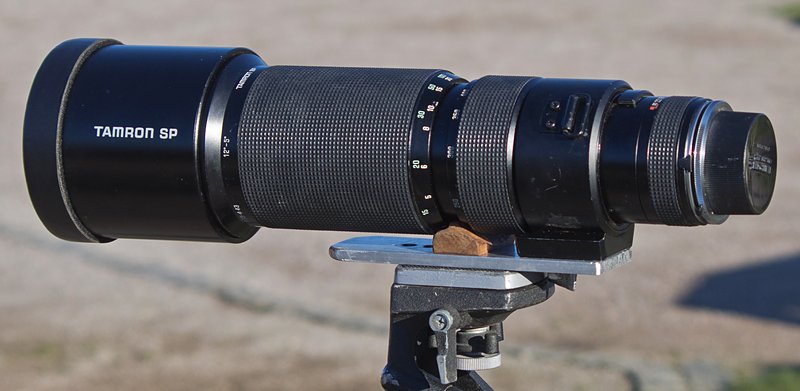
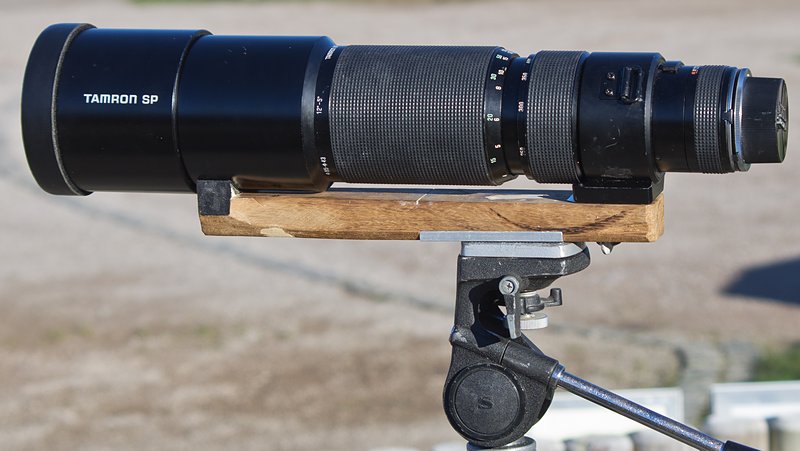
And here's a few 31A pics.
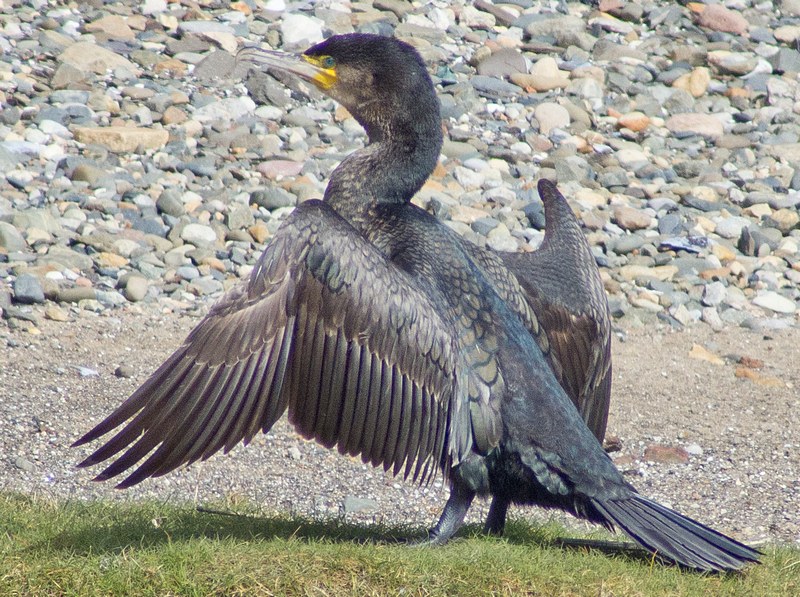
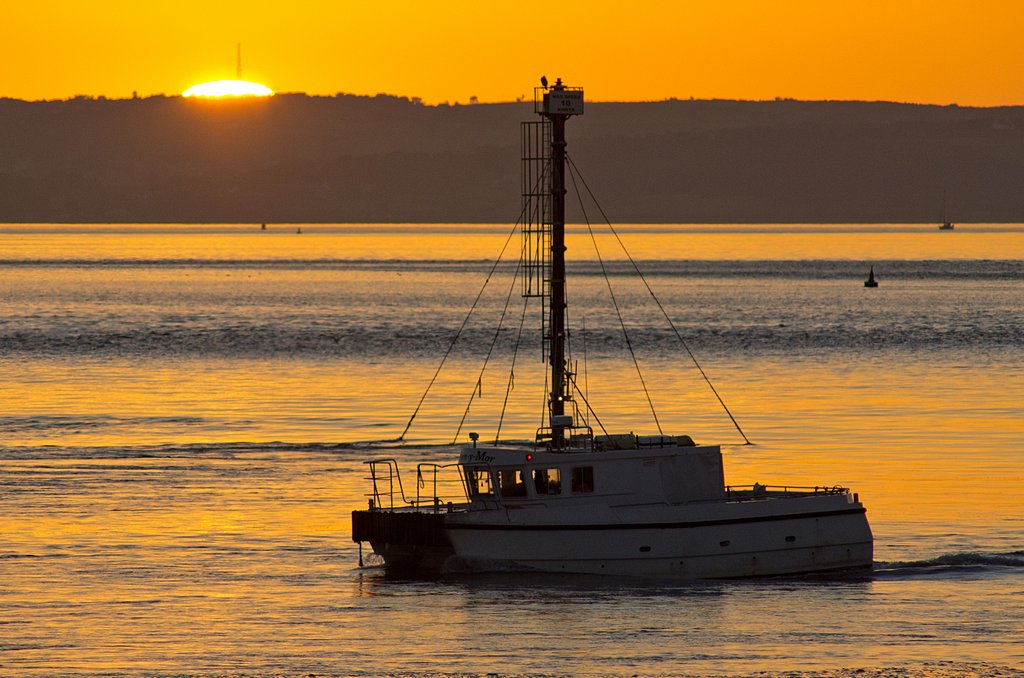
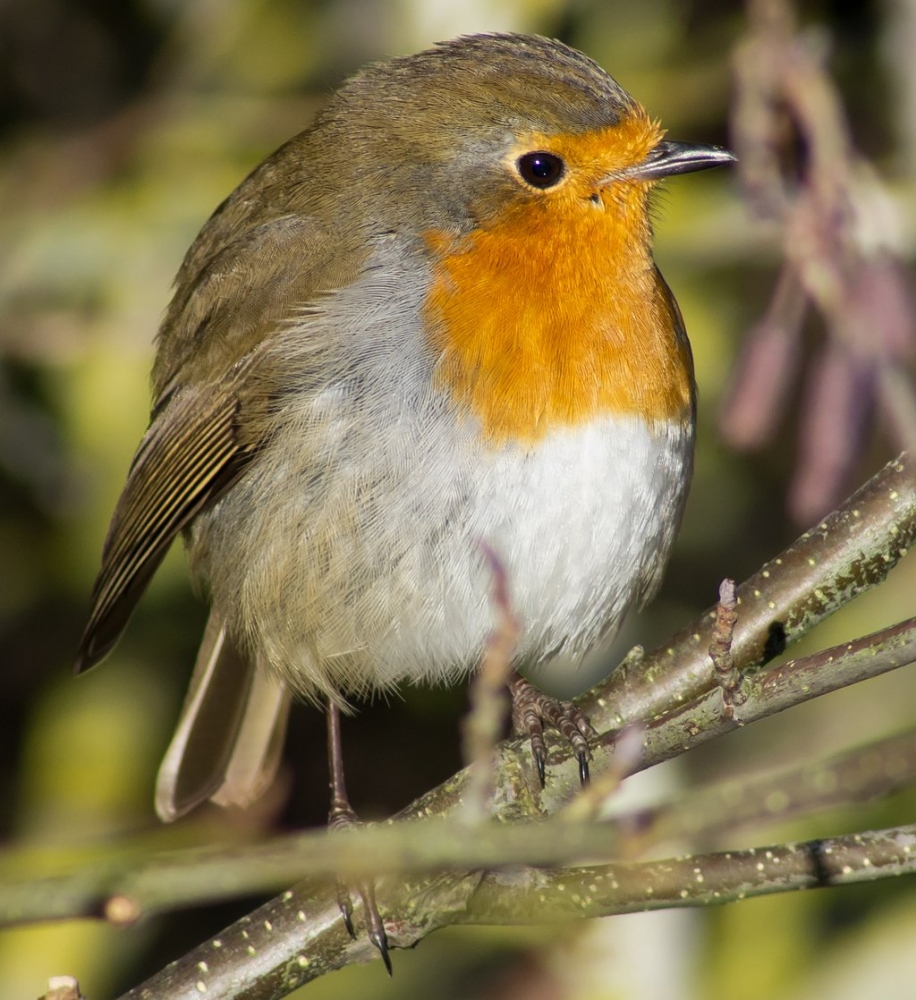

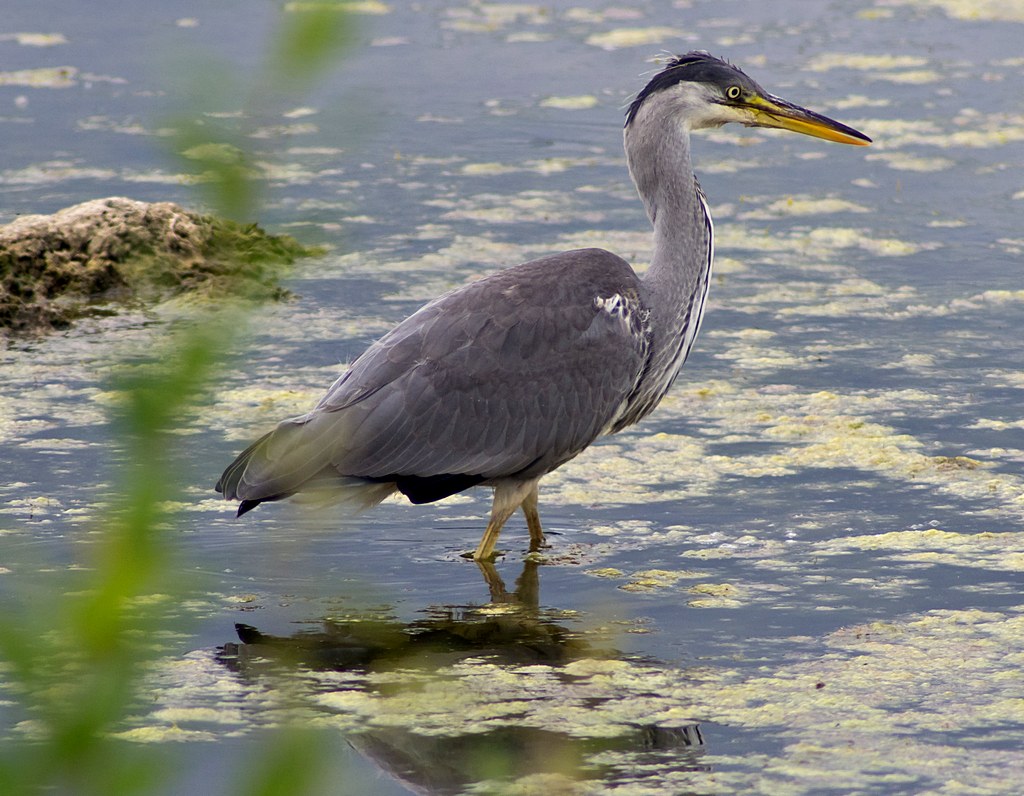

_________________
pentax ME super (retired)
Pentax K3-ii; pentax K-S2; Samsung NX 20; Lumix G1 + adapters;
Adaptall collection (proliferating!) inc 200-500mm 31A, 300mm f2.8, 400mm f4.
Primes: takumar 55mm; smc 28mm, 50mm; kino/komine 28mm f2's, helios 58mm, Tamron Nestar 400mm, novoflex 400mm, Vivitar 135mm close focus, 105mm macro; Jupiter 11A; CZJ 135mm.
A classic zoom or two: VS1 (komine), Kiron Zoomlock... |
|
| Back to top |
|
 |
cooltouch


Joined: 15 Jan 2009
Posts: 9096
Location: Houston, Texas
|
 Posted: Mon Jun 04, 2018 3:53 pm Post subject: Posted: Mon Jun 04, 2018 3:53 pm Post subject: |
 |
|
cooltouch wrote:
Marcus, about your second method for stabilizing your 31A, I like it. I notice the aluminum plate you've "inlaid" into that piece of hardwood. And yes, wood is especially good for soaking up vibration. Maybe that's why so many large format photographers still prefer wooden tripods? I dunno, I don't shoot large format.
But your images certainly show just what a phenomenal lens it is. Great shots!
_________________
Michael
My Gear List: http://michaelmcbroom.com/photo/gear.html
My Gallery: http://michaelmcbroom.com/gallery3/index.php/
My Flickr Page: https://www.flickr.com/photos/11308754@N08/albums
My Music: https://soundcloud.com/michaelmcbroom/albums
My Blog: http://michaelmcbroom.com/blogistan/ |
|
| Back to top |
|
 |
marcusBMG

Joined: 07 Dec 2012
Posts: 1318
Location: Conwy N Wales
|
 Posted: Mon Jun 04, 2018 6:38 pm Post subject: Posted: Mon Jun 04, 2018 6:38 pm Post subject: |
 |
|
marcusBMG wrote:
I tried insetting the 3/8 to 1/4 adapter that accepts the tripod or QR plate screw into the wood itself, but in a test it ripped out way too easily, hence the alu plate. I used some sorbothane type stuff on the front support off an old insole.
_________________
pentax ME super (retired)
Pentax K3-ii; pentax K-S2; Samsung NX 20; Lumix G1 + adapters;
Adaptall collection (proliferating!) inc 200-500mm 31A, 300mm f2.8, 400mm f4.
Primes: takumar 55mm; smc 28mm, 50mm; kino/komine 28mm f2's, helios 58mm, Tamron Nestar 400mm, novoflex 400mm, Vivitar 135mm close focus, 105mm macro; Jupiter 11A; CZJ 135mm.
A classic zoom or two: VS1 (komine), Kiron Zoomlock... |
|
| Back to top |
|
 |
cooltouch


Joined: 15 Jan 2009
Posts: 9096
Location: Houston, Texas
|
 Posted: Wed Jun 06, 2018 5:22 am Post subject: Posted: Wed Jun 06, 2018 5:22 am Post subject: |
 |
|
cooltouch wrote:
Wow, I have some sorbothane insoles -- somewhere -- I bought back in the 80s. That stuff really works.
_________________
Michael
My Gear List: http://michaelmcbroom.com/photo/gear.html
My Gallery: http://michaelmcbroom.com/gallery3/index.php/
My Flickr Page: https://www.flickr.com/photos/11308754@N08/albums
My Music: https://soundcloud.com/michaelmcbroom/albums
My Blog: http://michaelmcbroom.com/blogistan/ |
|
| Back to top |
|
 |
Focusthrow

Joined: 12 Sep 2017
Posts: 209
|
 Posted: Wed Jun 06, 2018 7:01 pm Post subject: Re: Tamron SP 200-500 f/5.6 Zoom Resolution Tests Posted: Wed Jun 06, 2018 7:01 pm Post subject: Re: Tamron SP 200-500 f/5.6 Zoom Resolution Tests |
 |
|
Focusthrow wrote:
| cooltouch wrote: |
I won this Tamron SP 200-500 f/5.6 at auction on eBay several months ago. Since winning it, I haven't used it much. I've been busy with other projects and just haven't had much time for photography. I decided to take a break from my projects and, since I haven't tested this Tamron yet, I decided I should put it through the same set of tests I put all my telephoto primes and zooms through -- typically 300mm and beyond, though.
Any of you who have read through my telephoto lens tests in the past know that I have a favorite subject for my tests. It's a water kiosk about 400 meters down the street from my house and I always take a picture of the same sign, focusing as well as I can on the small words at its base: "We care about the water you drink." There's nothing scientific about this test, but it is a consistent yardstick I can use to compare my telephotos to, which in turn gives me a good idea as to their sharpness.
The camera I use is a 10.1 mp Canon XS (1000D), set to ISO 100, and mounted to a sturdy tripod. I use Live View to achieve as much focusing accuracy as I can. I then take shots from the largest aperture down to f/16. It's been my experience that, any aperture smaller than f/16 with my telephotos and they are beginning to get soft.
Because this lens is a long telephoto zoom, I decided to do two tests, one at 500mm and another at 300mm. I took photos at f/5.6, f/8. f/11, and f/16, which are shown below.
@ 500mm:
@ 300mm:
Observations and Conclusions:
At both 500mm and 300mm focal lengths the lens shows noticeable CA -- the purple variety -- all the way up to f/11. At f/16 the CA is essentially gone. Fortunately, I have found the purple CA to be very easy to remove with the image processing software I use: Paint Shop Pro X2. I've been able to do the same in PhotoShop CS5, but since I don't use it as much, I find it much faster to do the corrections in PSP.
Sharpness is remarkably consistent across the span of selected apertures. There is very little difference in sharpness between f/5.6 and f/16. Contrast is somewhat low at wider apertures, but this is an easy fix in PP. At 500mm, this zoom compares favorably with my sharpest 500mm telephotos. At 300mm, it is just as sharp as my sharpest 300mm. If you look closely at the text, you will note that wherever there is a blurry looking letter that just below it the white frame also shows signs of waviness, which means there was some convection currents causing air turbulence. So it's best to compare the sharpest groupings of text and ignore those that have been affected by the convection currents.
I'm really surprised by the image quality produced by this lens. In terms of sharpness, it rivals the sharpest zoom I've ever owned, which was a manual focus Nikon 200-400mm f/4 ED AIs. That Nikkor sells for $4000 and up these days, while typically you'll see this Tamron on eBay for $500 and up. I really lucked out on this one. The seller offered it as a straight auction with a low opening bid amount instead of as a Buy It Now, and there really wasn't much bidding interest. I bought it for $219.50. It didn't come with its original case and it has a bit of slight wear to its exterior. But the glass is perfect and it is mechanically sound.
For a complete description of this lens, with photo and schematic, go here: http://adaptall-2.org/lenses/31A.html
The biggest drawback to this lens is its size and weight. 2.72 kg or an even 6 lb. Whew! It is bigger and heavier than my Tamron SP 300mm f/2.8 LD. Shorter than my Century 500mm telephoto prime, but it weighs more. So if a person is willing to deal with the heft of this lens, it can definitely provide excellent images. IMNSHO. |
Excellent work!!! It sure is great to have these kinds of go-to threads when considering a lens of this nature. Great people, like you, are a large reason why forums of this nature are an absolute gem! Best, jt |
|
| Back to top |
|
 |
marcusBMG

Joined: 07 Dec 2012
Posts: 1318
Location: Conwy N Wales
|
 Posted: Wed Jun 06, 2018 9:37 pm Post subject: K3 and 31A Posted: Wed Jun 06, 2018 9:37 pm Post subject: K3 and 31A |
 |
|
marcusBMG wrote:
I have just acquired a s/h K3-ii - a significant upgrade on my venerable K5, 24MPx vs 16MPx. Today was a first try with the 31A. How would this old lens measure up to the demands of a more demanding sensor? Over by the golf course some stone chats and linnets have been proving nice test subjects letting me get to within 8m, hanging out on the brambles and bushes while I tweak focus, check the result on the lcd, refocus. All at f9.4, 400ASA, 1/800-1/1600 sec shutter, monopod.

This is not resized - 1:1 crop.



The exercise reinforces how sharp critical focus is, particularly when there is big cropping of the image. Even with the long focus throw of the 31A, adjustment is millimetric.
One more:

_________________
pentax ME super (retired)
Pentax K3-ii; pentax K-S2; Samsung NX 20; Lumix G1 + adapters;
Adaptall collection (proliferating!) inc 200-500mm 31A, 300mm f2.8, 400mm f4.
Primes: takumar 55mm; smc 28mm, 50mm; kino/komine 28mm f2's, helios 58mm, Tamron Nestar 400mm, novoflex 400mm, Vivitar 135mm close focus, 105mm macro; Jupiter 11A; CZJ 135mm.
A classic zoom or two: VS1 (komine), Kiron Zoomlock... |
|
| Back to top |
|
 |
|
|
